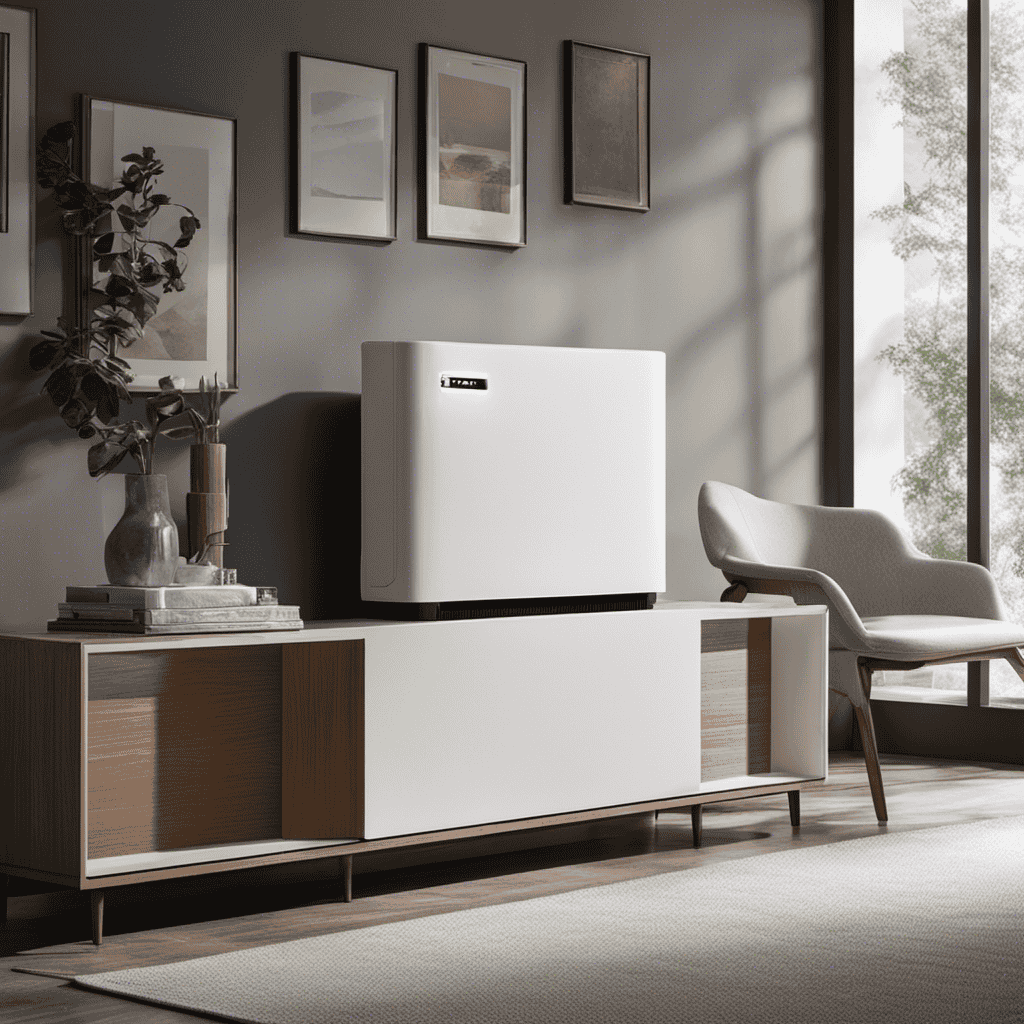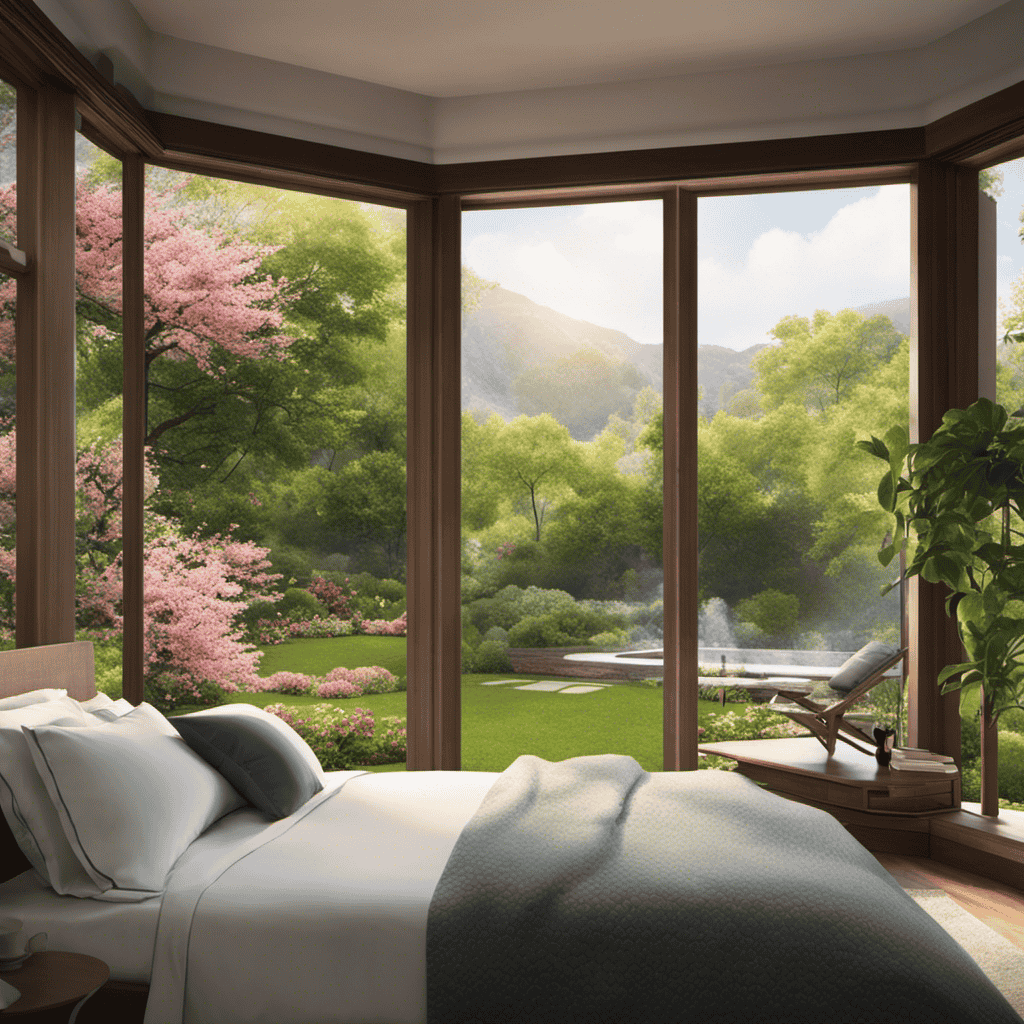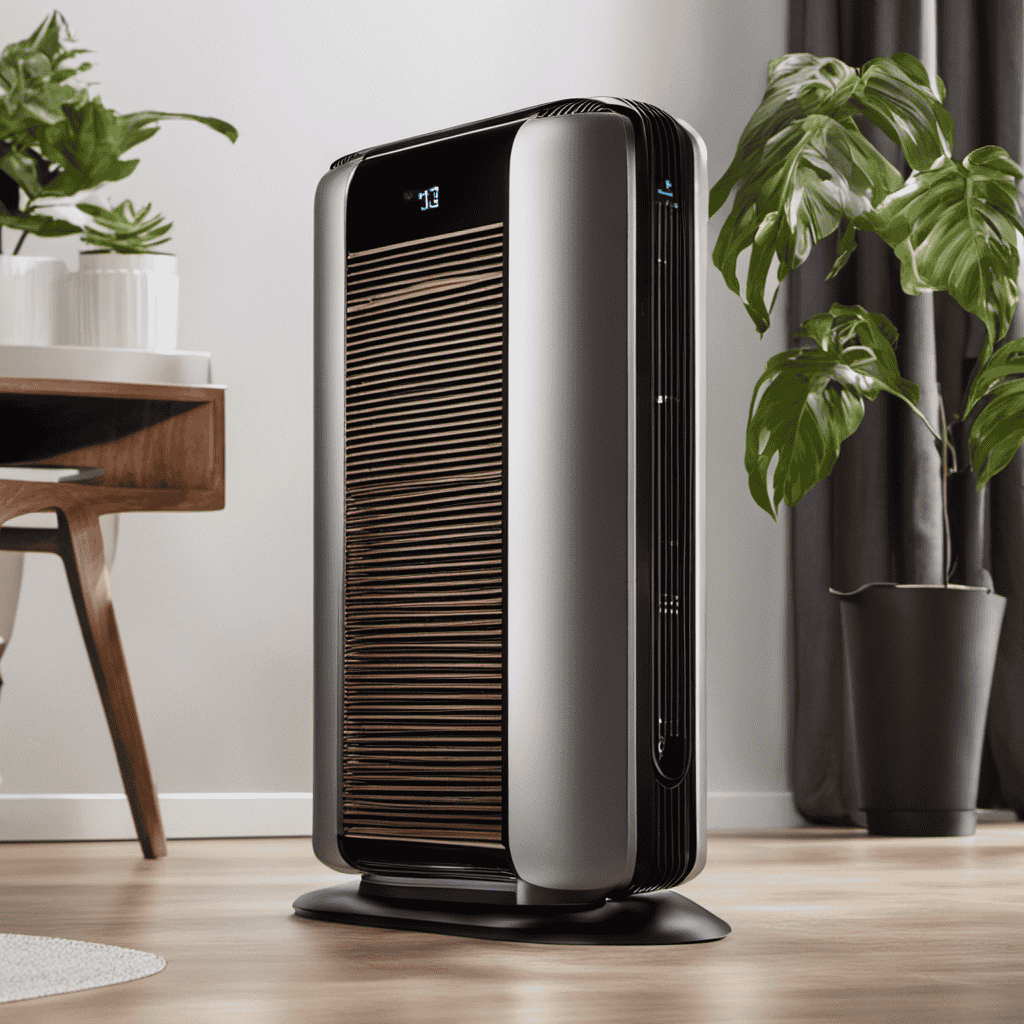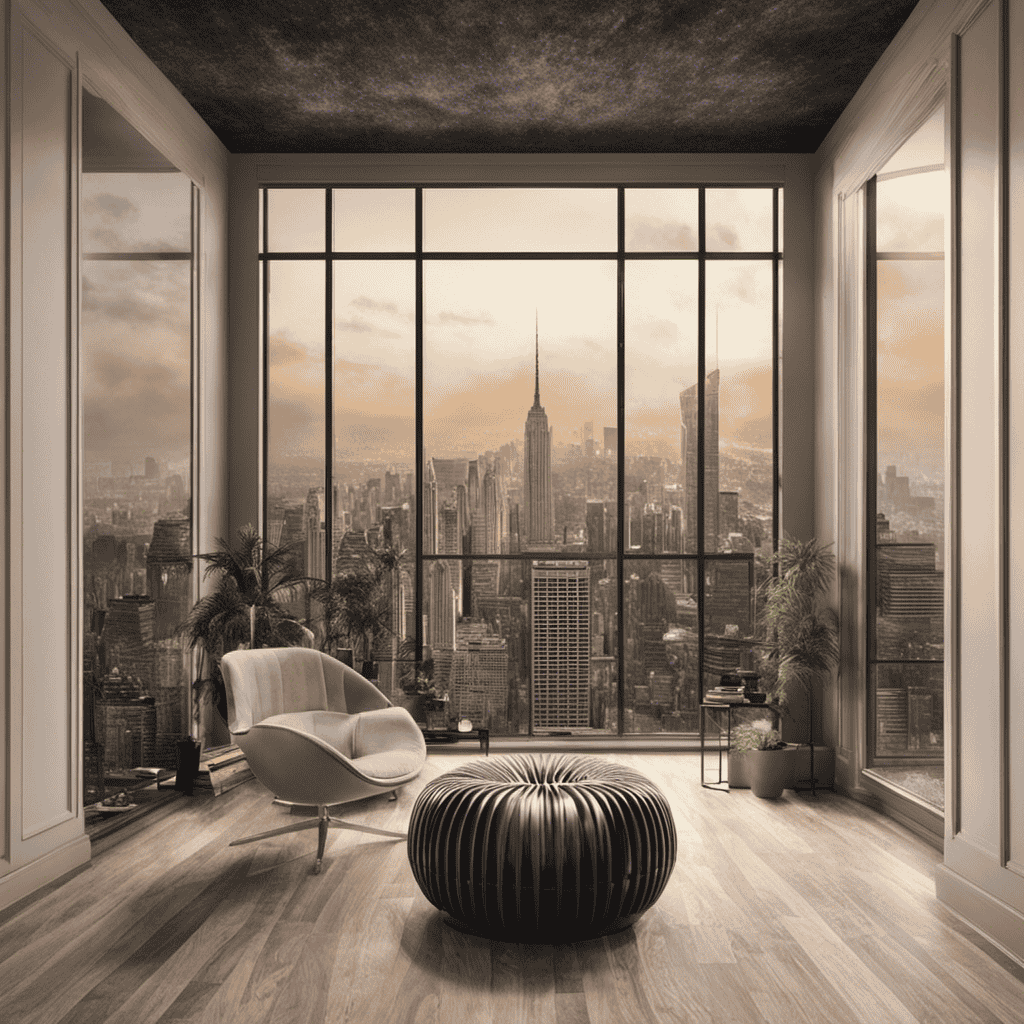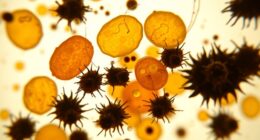Hey there! Have you ever been annoyed by a Levoit Air Purifier that isn’t working properly? Don’t worry! I have a detailed guide on how to reset your reliable air purifier and have it running smoothly again.
In this article, I’ll walk you through the step-by-step process of resetting various aspects of your Levoit Air Purifier, from the filter indicator to the Wi-Fi connection.
So, let’s dive in and banish those air purifier woes for good!
Key Takeaways
- Resetting the air purifier is important for maintaining optimal performance, improving air quality, enhancing efficiency, and prolonging the lifespan of the device.
- Specific functions that can be reset include the filter indicator, timer function, air quality monitor, speed settings, and child lock feature.
- Troubleshooting and maintenance tasks include addressing reminder issues, resetting the Wi-Fi connection, monitoring filter replacement timing, and regular filter maintenance.
- The step-by-step reset instructions include unplugging and waiting for 10 seconds, pressing and holding the power button or reset button, troubleshooting power or sound issues, resetting specific functions, and contacting Levoit customer support if needed.
Checking the Power Source
First, make sure you’re plugged into a working power outlet. Troubleshooting power issues with your Levoit air purifier begins by checking the power cable. Ensure that the power cable is securely connected to both the air purifier and the power outlet.
Look for any visible damage or frayed wires along the length of the cable. If you notice any damage, it is important to replace the cable to avoid any potential safety hazards.
Additionally, try plugging the air purifier into a different power outlet to rule out any issues with the current outlet. If the issue persists, it may be necessary to contact Levoit customer support for further assistance.
Locating the Reset Button
To locate the reset button, you’ll need to check the user manual or the manufacturer’s website for instructions. The reset button is typically located on the control panel of the Levoit air purifier.
Here are three common mistakes to avoid when trying to reset the device:
-
Pressing the wrong button: Make sure you are pressing the designated reset button, as pressing the wrong button can cause unintended consequences.
-
Not holding the button long enough: Some Levoit air purifiers require you to hold the reset button for a certain period of time to initiate the reset process. Be sure to follow the instructions carefully.
-
Forgetting to disconnect the power: Before pressing the reset button, it is important to unplug the air purifier from the power source. Failing to do so can lead to electrical shocks or damage to the device.
Understanding the reset process is crucial for troubleshooting power issues and ensuring the proper functioning of your Levoit air purifier.
Understanding the Reset Process
When it comes to resetting specific models of air purifiers, troubleshooting reset issues, and understanding the importance of resetting regularly, there are a few key points to keep in mind.
Firstly, different models may have different reset processes, so it’s crucial to refer to the user manual or manufacturer’s guidelines for accurate instructions.
Secondly, if you encounter any issues while attempting to reset your air purifier, it’s essential to troubleshoot the problem. This can be done by checking the power source, ensuring proper button presses, and verifying any error codes or indicators.
Lastly, regularly resetting your air purifier is important. It helps maintain optimal performance, clears any accumulated data or settings, and ensures the longevity of the device.
Resetting Specific Models
One way to reset specific models of the Levoit air purifier is by unplugging it from the power source and waiting for 10 seconds before plugging it back in. This simple process can help troubleshoot connectivity issues and reset the ionizer function.
Here are three important things to keep in mind when performing a reset on your Levoit air purifier:
- Make sure the power cord is securely plugged into the wall outlet before unplugging it.
- During the 10-second wait, it’s recommended to press and hold the power button on the control panel to discharge any residual power.
- After plugging the air purifier back in, wait for a few seconds for it to power on and initialize.
By following these steps, you can easily reset your Levoit air purifier and resolve any connectivity issues or problems with the ionizer function.
Now, let’s move on to troubleshooting reset issues in the next section.
Troubleshooting Reset Issues
Make sure you securely plug in the power cord before attempting a reset on your device.
When troubleshooting power failure, first check the power source and ensure the cord is properly connected.
If there is still no power, try plugging the device into a different outlet to rule out any issues with the power source.
If the power cord is securely plugged in and there is still no power, it could indicate a problem with the device itself. In this case, it is recommended to contact customer support for further assistance.
On the other hand, when troubleshooting connectivity issues, make sure that the device is properly connected to your Wi-Fi network.
If the connection is weak or unstable, try moving the device closer to the router or resetting your router.
It is important to regularly reset your device to ensure optimal performance and address any potential issues that may arise.
Importance of Resetting Regularly
Regularly resetting your device can help maintain its optimal performance and address any potential issues that may arise. Here are three key benefits of regular maintenance and how it can extend the lifespan of your air purifier:
Improved Air Quality: Resetting your air purifier regularly ensures that it continues to effectively filter out pollutants, allergens, and odors from your indoor air. This helps maintain a clean and healthy environment for you and your family, reducing the risk of respiratory issues and allergies.
Enhanced Efficiency: Over time, the internal components of your air purifier may accumulate dust and debris, which can hinder its performance. By resetting the device, you can clear any clogs or blockages, allowing for better airflow and more efficient operation.
Prolonged Lifespan: Resetting your air purifier regularly helps prevent excessive wear and tear on its components. This can extend the overall lifespan of the device, saving you money in the long run by avoiding the need for frequent repairs or replacements.
Step-by-Step Reset Instructions
To reset the Levoit air purifier, start by unplugging it from the power source. This will ensure your safety while troubleshooting any power issues or resetting the sound settings. After unplugging, wait for at least 10 seconds before plugging it back in. This will allow the purifier’s internal components to fully discharge any remaining power. Once plugged back in, press and hold the power button for 5 seconds until you hear a beep sound. This indicates that the purifier has been successfully reset. If you’re still experiencing power issues or sound problems, refer to the table below for further troubleshooting steps.
| Problem | Solution |
|---|---|
| No power | Check if the power cord is securely plugged in. If not, plug it in properly. |
| No sound | Make sure the volume is turned up. If it is, try adjusting the sound settings in the purifier’s menu. |
| Sound distortion | Check if the speakers are clean and free from any obstructions. If not, clean them gently with a soft cloth. |
| Sound not syncing | Reset the sound settings by following the steps mentioned earlier. If the issue persists, contact Levoit customer support for assistance. |
Resetting the Filter Indicator
After unplugging the purifier from the power source, you should wait for at least 10 seconds before plugging it back in. Resetting the filter indicator on your Levoit air purifier is an essential troubleshooting step to ensure the device continues to function optimally. Here’s how you can do it:
- Press and hold the Filter Reset button on the control panel for 5 seconds.
- The filter indicator light will flash three times to indicate the reset was successful.
- Release the button and the filter indicator light should turn off, indicating the filter has been reset.
Resetting the filter indicator is crucial for maintaining the air purifier’s effectiveness in removing pollutants from your indoor space.
Now that we’ve reset the filter indicator, let’s move on to resetting the timer function.
Resetting the Timer Function
Now that we’ve addressed resetting the filter indicator, let’s focus on how to reset the timer function on your Levoit purifier.
The timer function allows you to set a specific time for your purifier to automatically turn on or off, providing you with convenience and energy savings. However, if you are experiencing issues with the timer or need to reset it, follow the steps below:
- Press the ‘Timer’ button on the control panel to enter the timer settings.
- Use the arrow buttons to adjust the desired time for the purifier to turn on or off.
- Press the ‘Timer’ button again to confirm and save the new settings.
By following these steps, you can easily reset the timer function on your Levoit purifier. If you encounter any sound settings or timer issues, refer to the troubleshooting section in the user manual for further assistance.
Now, let’s move on to the next section where we will discuss resetting the air quality monitor.
Resetting the Air Quality Monitor
If you’re having trouble with the air quality monitor, try following these steps to reset it.
Resetting the air quality sensor can help troubleshoot sensor calibration issues and ensure accurate readings.
Here’s what you need to do:
-
Power off the air purifier: Unplug the device from the power source and wait for at least 5 minutes. This will allow the internal components to reset.
-
Press and hold the reset button: Locate the reset button on the air purifier and press and hold it for about 10 seconds. This will initiate the reset process.
-
Power on the air purifier: Plug the device back into the power source and turn it on. The air quality monitor should now be reset and ready to provide accurate readings.
Resetting the Speed Settings
When it comes to adjusting fan speed on your air purifier, there are a few key points to consider.
First, understanding how to adjust the fan speed settings allows you to customize the airflow to your specific needs and preferences.
Second, restoring default settings can be useful if you have made any changes that you want to undo or if you are experiencing any issues with the current settings.
Lastly, troubleshooting speed issues involves identifying and resolving any problems that may be causing the fan speed to not operate as expected.
Adjusting Fan Speed
To adjust the fan speed on the Levoit air purifier, simply press the speed button. The fan speed options range from low to high, allowing you to customize the purification settings based on your needs.
Here are some tips for troubleshooting fan issues and adjusting purification settings:
-
Ensure proper ventilation: Make sure the air purifier is placed in an open area with adequate airflow. Blocked vents can affect the fan speed and overall performance.
-
Clean the filters: Over time, the filters may become clogged with dust and debris, restricting airflow and causing the fan to work harder. Regularly clean or replace the filters to maintain optimal fan speed.
-
Adjust purification mode: Some Levoit air purifiers offer different purification modes, such as sleep mode or auto mode. Experiment with different modes to find the right balance between fan speed and purification efficiency.
Restoring Default Settings
You can easily restore the default settings on the Levoit air purifier by pressing and holding the reset button for 5 seconds. Restoring the default settings can be useful when troubleshooting reset issues or if you simply want to start fresh with your purifier.
The reset button is usually located on the control panel or on the back of the unit. Once you locate the reset button, press and hold it for 5 seconds until you see the indicator light blink or hear a beep. This action will reset the purifier to its original factory settings, erasing any customized settings or preferences you may have had.
It is important to note that all filters will also reset when you restore the default settings.
Troubleshooting Speed Issues
In my experience with the Levoit air purifier, I have encountered some speed issues that required troubleshooting.
One common problem is excessive noise levels from the device. To troubleshoot this, check if the air purifier is placed on a stable surface and ensure that there are no obstructions blocking the airflow. Adjusting the airflow direction can also help alleviate noise issues.
Another issue that may arise is a lack of airflow or weak performance. In such cases, it is advisable to clean or replace the air filters as they may be clogged with dirt and debris. Additionally, make sure that the air purifier is not placed in a confined space that restricts air circulation.
By following these troubleshooting steps, you can optimize the performance of your Levoit air purifier.
Now, let’s move on to resetting the child lock feature.
Resetting the Child Lock Feature
If you’re having trouble resetting the child lock feature on your Levoit air purifier, here’s what you can do. The child lock is designed to prevent accidental changes to the air purifier settings, but sometimes it can malfunction or get stuck. To troubleshoot this issue, follow the steps below:
| Step | Action |
|---|---|
| 1 | Disconnect the air purifier from the power source. |
| 2 | Wait for 10 seconds and then plug it back in. |
| 3 | Press and hold the child lock button for 5 seconds. |
| 4 | Release the button and check if the child lock is reset. |
Resetting the Sleep Mode
When it comes to the Sleep Mode feature on your device, you may encounter a malfunction that requires you to reset it.
This can be a frustrating experience, especially if you’re unable to access the power source.
However, there are methods available for resetting the Sleep Mode without the need for power, ensuring smooth operation of your device.
Sleep Mode Malfunction
The sleep mode on the Levoit air purifier isn’t working properly, so it may need to be reset. This can be a frustrating issue, but there are a few troubleshooting steps you can try to optimize the sleep mode settings:
- Ensure that the sleep mode is enabled in the settings menu.
- Check if the sleep mode timer is properly set to your desired duration.
- Make sure that the air purifier is placed in a quiet and dimly lit area, as excessive noise or light can interfere with the sleep mode functionality.
By following these steps, you can troubleshoot the sleep mode malfunction on your Levoit air purifier and ensure that it works as intended. If the issue persists, it may be necessary to reset the air purifier entirely.
Speaking of resetting, let’s now explore how to reset the Levoit air purifier without power.
Resetting Without Power?
To reset the device without power, you can simply unplug it and wait for a few minutes before plugging it back in. This method is useful for resetting the Levoit air purifier after a power outage or a malfunction.
Power outages can sometimes cause the device to become unresponsive or display error messages. By unplugging the air purifier and waiting for a few minutes, you allow the internal components to fully discharge, which helps to clear any temporary glitches or errors.
Once you have waited for a few minutes, you can plug the device back in and it should reset itself. This simple reset method can often resolve minor issues and restore the air purifier to its normal functioning state.
Resetting the Auto Mode
If you’re having trouble resetting the auto mode on your Levoit air purifier, try holding down the power button for 5 seconds. This will initiate a reset of the settings and might resolve any issues with the auto mode.
Troubleshooting the auto mode can be frustrating, but here are a few things to keep in mind:
- Make sure the air purifier is plugged in properly and receiving power.
- Check if the filter is clean and properly installed.
- Try resetting the air purifier to its factory settings by holding down the power button for 10 seconds.
By following these steps, you should be able to troubleshoot and reset the auto mode on your Levoit air purifier.
Remember to refer to the user manual for specific instructions and contact customer support if you continue to experience difficulties.
Resetting the Filter Replacement Reminder
When it comes to maintaining an optimal air quality with your Levoit air purifier, resetting the filter replacement reminder is an essential task.
In this discussion, I will cover the step-by-step process of resetting the reminder to ensure you never miss a filter change.
Additionally, I will provide information on the recommended timing for filter replacement and offer troubleshooting tips for any issues you may encounter with the reminder function.
Reminder Reset Process
The reset process for the Levoit air purifier can be done by pressing and holding the reset button for 5 seconds. This will restore the purifier to its default settings and resolve any issues you may be experiencing.
If you’re having trouble with power, make sure the purifier is properly plugged into a functioning outlet. Check the power cord for any damage or loose connections. If the power issue persists, try using a different outlet or resetting the circuit breaker.
To reset the air purifier settings, press and hold the reset button until you see the indicator light blink. This will clear any custom settings or errors and restore the purifier to its factory settings.
Remember to unplug the purifier before attempting any troubleshooting or resetting.
Timing for Filter Replacement
To maintain optimal performance, it’s important to regularly replace the filters in your Levoit air purifier. Filter maintenance is crucial for ensuring clean and fresh air in your home or office. By replacing the filters at the right time, you can prolong the filter life and maximize the efficiency of your air purifier. Levoit recommends replacing the filters every 6-8 months, depending on usage and air quality. However, it’s important to note that individual circumstances may vary, and it’s always best to check the filter indicator or consult the user manual for specific instructions. By following these recommendations and practicing regular filter maintenance, you can ensure that your Levoit air purifier continues to provide you with clean and healthy air for years to come.
| Filter Type | Recommended Replacement Frequency |
|---|---|
| Pre-Filter | Every 6-8 months |
| True HEPA | Every 6-8 months |
| Activated Carbon | Every 6-8 months |
Troubleshooting Reminder Issues
If you’re experiencing reminder issues with your Levoit air purifier, it’s helpful to consult the user manual for troubleshooting tips. Here are three common issues that can affect the reminders on your air purifier:
-
Connectivity Problems: Sometimes, the air purifier may lose its connection to the Wi-Fi network, causing the reminder notifications to stop working. To troubleshoot this, ensure that your air purifier is connected to a stable Wi-Fi network and check if the Wi-Fi signal strength is adequate.
-
Resetting the Display Settings: If the reminder settings are not displaying correctly or are not triggering as expected, you may need to reset the display settings. Refer to the user manual for instructions on how to reset the display settings on your Levoit air purifier.
-
Power Cycle: Occasionally, a simple power cycle can resolve reminder issues. Try turning off the air purifier, unplugging it from the power source, and then plugging it back in after a few minutes. This can help refresh the system and resolve any minor glitches.
Resetting the Wi-Fi Connection
Simply disconnecting the Levoit air purifier from the Wi-Fi can help troubleshoot connectivity problems and resolve Wi-Fi issues. To do this, locate the power cord at the back of the purifier and unplug it from the outlet. Once the power is disconnected, wait for about 10 seconds before plugging it back in.
This will allow the purifier to completely power down and reset the Wi-Fi connection. After plugging it back in, the purifier will start up again and attempt to reconnect to the Wi-Fi network. Make sure to check the Wi-Fi signal strength and ensure that the purifier is within range of the router.
If the problem persists, refer to the user manual or contact Levoit customer support for further assistance.
Resetting the Error Codes
You can troubleshoot error codes on your Wi-Fi connected device by power cycling it. Error codes can be frustrating, but with a few simple steps, you can reset them and get your device back up and running smoothly.
Here’s how to do it:
-
Turn off the device: Locate the power button on your device and press it to turn it off. Make sure it is completely powered down before proceeding to the next step.
-
Unplug the device: Disconnect the power cord from the device and wait for at least 30 seconds. This will allow any residual power to dissipate.
-
Plug it back in: After the 30 seconds have passed, plug the device back in and turn it on. Wait for it to fully boot up and reconnect to the Wi-Fi network.
Troubleshooting Resetting Issues
When troubleshooting resetting issues, it’s important to follow the proper steps to ensure your device functions correctly. Whether you’re dealing with a power outage or connectivity issues, understanding the root cause of the problem is crucial. Below, I have provided a table that outlines the troubleshooting steps for both power outage and connectivity issues. By following these steps, you can quickly identify and resolve any resetting issues with your Levoit air purifier.
| Issue | Troubleshooting Steps |
|---|---|
| Power Outage | 1. Check power source and ensure it’s working properly. |
| 2. Reset the air purifier by unplugging it for 10 seconds and then plugging it back in. | |
| 3. Test the device to ensure it’s functioning correctly. | |
| Connectivity Issues | 1. Check Wi-Fi connection and ensure it’s stable. |
| 2. Restart your router and modem. | |
| 3. Reset the air purifier’s connectivity settings and reconnect to the Wi-Fi network. |
Frequently Asked Questions
How Often Should I Reset My Levoit Air Purifier?
I reset my Levoit air purifier once every six months. Resetting helps maintain optimal performance and prolongs the lifespan of the filter. Regular filter changes and resetting ensure clean air and a healthy environment.
Can I Reset My Levoit Air Purifier Without Unplugging It?
Yes, you can reset your Levoit air purifier without unplugging it. There are various resetting methods available, such as pressing and holding specific buttons or using troubleshooting tips provided in the user manual.
Is There a Specific Order in Which I Need to Reset the Different Features of My Levoit Air Purifier?
There is a specific order to follow when resetting the different features of my Levoit Air Purifier. It’s important to troubleshoot the reset process, ensuring that each step is done correctly for optimal performance.
What Should I Do if the Reset Button on My Levoit Air Purifier Doesn’t Work?
If the reset button on my Levoit air purifier doesn’t work, I can try alternative reset methods. Troubleshooting the reset button involves checking the power supply, unplugging the device, and pressing and holding the reset button for a longer duration.
Are There Any Potential Risks or Side Effects of Resetting My Levoit Air Purifier?
Resetting my Levoit Air Purifier may have potential risks and side effects. It’s crucial to follow the manufacturer’s instructions carefully to avoid any damage to the device or potential harm to yourself.
Is Resetting the Levoit Air Purifier the Same as Unlocking It?
Yes, resetting the Levoit Air Purifier is the same as unlocking it. Both processes involve clearing the existing settings and restoring the purifier to its original state. Whether you want to change the filter or troubleshoot issues, knowing how to unlock Levoit Air Purifier is essential for maintaining its optimal performance.
Conclusion
In conclusion, resetting your Levoit air purifier is a simple process that can help ensure optimal performance and efficiency. By following the step-by-step instructions and understanding the different reset options available, you can easily troubleshoot any issues and keep your air purifier running smoothly.
It is interesting to note that according to a study by the Environmental Protection Agency (EPA), indoor air can be up to five times more polluted than outdoor air. This statistic emphasizes the importance of regularly maintaining and resetting your air purifier to ensure clean and healthy air in your home.

